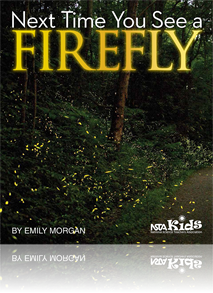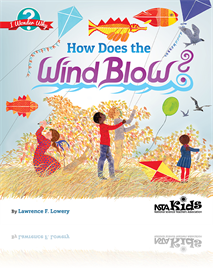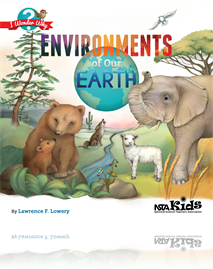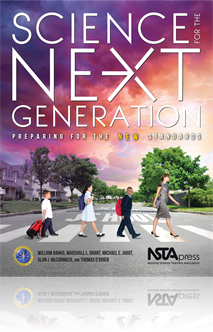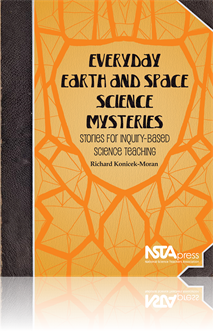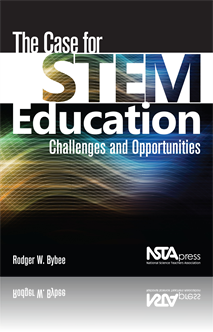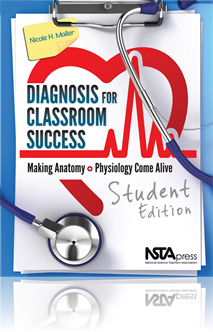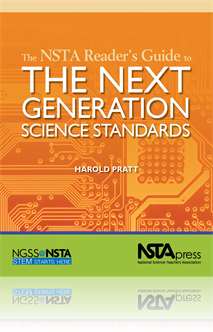All Book Chapters
Book Chapter
Fireflies are one of the most fascinating insects because of their ability to produce light inside their bodies. Have you ever wondered why fireflies flash?This sample from Next Time You See a Firefly gives you a tease of what the whole books is abou...
Book Chapter
In this sample of Spenser and the Rocks: I Wonder Why, Spenser has a rock collection. He notices that the rocks were different in other ways besides color. Come learn with Spenser about rocks!...
Book Chapter
Clouds, Rain, Clouds Again sample
You may not like a rainy day. But rain is water, and water is needed. Find out why in this sample of Clouds, Rain, Clouds Again: I Wonder Why....
Book Chapter
There are times when the air moves a bit faster than a light breeze. It moves fast enough to bend small twigs on trees and bushes. It flutters the leaves on trees. This is just a tease of what you can read about in How Does the Wind Blow? I Wonder Wh...
Book Chapter
Students Teaching Students: Jigsawing Through an Environmental Biology Course
The environmental biology course discussed in this chapter was designed for non- science majors, most of whom were preservice elementary education students. Instruction in the course is designed around the constructivist teaching model based on inqui...
Book Chapter
This sample of Up, Up in a Balloon: I Wonder Why gives you a little tease of what the book is about....
Book Chapter
Environments of Our Earth: I Wonder Why sample
In this sample from Environments of Our Earth: I Wonder Why, come learn about the desert environment....
Book Chapter
5E(z) Guidelines for Designing Research- Informed Science Lesson Sequences
Overworked elementary teachers do not have to invest their limited time in creating, field-testing, and revising their own science activities from scratch. This chapter reviews the five steps that teachers can use to better sequence science learning ...
Book Chapter
What is wind? What is it made of? What can it do? In this lesson, students explore ways to change the speed and direction of a Ping-Pong ball using a handheld air pump to simulate wind. Simple experiments help them understand that air has weight and ...
Book Chapter
What’s Hiding in the Woodpile?
Wood comes from trees, right? It is full of potential chemical energy that can produce heat when it is put into a stove or fireplace and burned. Yet, in this story, the Earth’s bounty seems to produce a cooler room. What can be the cause? Thermodyn...
Book Chapter
This story is based upon using solar energy and a variety of materials to modify and channel this energy to capture and hold heat. Almost everybody has experienced the differences in temperature due to sunshine passing through windows into an enclose...
Book Chapter
Some students may not believe that it is possible for a puddle that appears larger to evaporate more quickly than one that seems smaller. The story in this chapter has to do with evaporation. The authors explore the major factors that lead to how qui...
Book Chapter
The main purpose of the “Cheeks” story is to get the children to learn something about the behavior of shadows cast by objects in sunlight. Although the story takes liberties with the “thoughts and projections” of Cheeks, one can take it as m...
Book Chapter
The purpose of this story used in this chapter is to help students learn about the source of heat energy that warms their planet. Of course that is the Sun, and it only has an effect on the temperature of the Earth when it is shining on a particula...
Book Chapter
The theme of the story can be summed up in one word: microclimates. Have you noticed that there are variations among the temperatures broadcasted on your radio or TV and your own thermometer? Have you noticed that there are differences in temperature...
Book Chapter
This story is designed to spur an inquiry activity about the process of weathering and soil formation. Evidence lies all around us if we look closely enough and ask the right questions. Eddie is helping us by asking some of these questions and the au...
Book Chapter
Students may have the idea that all mountains are volcanoes and were formed by eruptions. The story in this chapter brings up questions about the geology of mountains and the weathering and erosion that takes place as nature breaks down the higher la...
Book Chapter
Your students will probably not be aware of the amount of water that covers the Earth’s surface. The story in this chapter will help introduce students not only to a clearer idea of the characteristics of our planet, but also to the concepts of pro...
Book Chapter
Many of your younger students do not believe that air around us has mass or weight, let alone exerts pressure on us and on everything around us. So, the idea that the atmosphere in which we walk actually has mass and can exert pressure on our world m...
Book Chapter
In 1991 and 1992, John Leach, Bonnie Shapiro, and the author did a study in which they interviewed approximately 400 students from the United Kingdom, Canada, and the United States about their beliefs surrounding the decay of an apple over a year’s...
Book Chapter
The author’s research and that of others show that children have a difficult time understanding the recycling of organic matter in an ecosystem. The story in this chapter aims to have students speculate about what happens to organic material over t...
Book Chapter
How Is STEM Education Reform Different From Other Education Reforms?
“How is this education reform different from any other reform?” In the context of this chapter, the answer to this question is what differentiates STEM reform from other reforms, such as the Sputnik era. This chapter has three parts. The first pa...
Book Chapter
Let’s Diagnose Them, Lab 3:<i>Blood Smears</i>
In the student version of this activity, your students are beginning to think that some of their patients’ symptoms may be caused by either a pathogen or a genetic disorder. The students will analyze the red blood cells. This sample chapter also in...
Book Chapter
Teacher Guide for Let’s Diagnose Them, Lab 3: Blood Smears
In the teacher version of this activity, your students are beginning to think that some of their patients’ symptoms may be caused by either a pathogen or a genetic disorder. The students will analyze the red blood cells. This sample chapter also in...
Book Chapter
Introduction To The <i>NGSS</i>
The Next Generation Science Standards (NGSS) consists of a series of standards for grades kindergarten through 12. In rather straightforward terms, the NGSS has only two specific purposes beyond its broad vision for science education, namely (1) to ...
Book Chapter
The best preparation for the NGSS is a thorough understanding of the Framework. This chapter provides a brief overview of portions of the Framework, including Part I, Part II, and Part III. A brief history of the Framework's development is also prov...
Book Chapter
The new standards promote a vision that the instruction and the learning your students experience should change significantly. An early piece of front matter in the Next Generation Science Standards (NGSS) that lists the conceptual shifts called for ...
Book Chapter
Moving From the <i>NGSS</i> to Instruction
This chapter outlines a dynamic, active process for understanding how each component of a standard interacts with the other components by developing an instructional sequence starting with one or possibly two performance expectations. It is a roadmap...
Book Chapter
A Guide for Leading a Study Group on the Total Curriculum
The procedure outlined in this chapter is the next step in understanding the full array of what is in the Next Generation Science Standards (NGSS) and will prepare your team for the more comprehensive step of examining what is in the entire document,...
Book Chapter
The vision of the Framework and the Next Generation Science Standards will be realized only if significant changes in instruction, instructional materials, assessments, curriculum, and professional development are implemented at the state and local l...
Book Chapter
Earning Your White Coats:<i> Medical School Research</i>
In order to graduate medical school, all students must complete the research portion of this project. All medical students are required to investigate, as thoroughly as possible, the causes of, symptoms of, and potential treatments for four health c...
Book Chapter
What's Wrong With Me, Doc? <i>Analyzing Medical Records</i>
This chapter focuses on a residency program at Vanguard Hospital. The students are asked to analyze four patients’ medical records containing their symptoms, lifestyle habits, and family medical histories. With respect to privacy, these records are...
Book Chapter
Let's Diagnose Them, Lab 1: <i>Urinalysis</i>
In medical school, students learn about the excretory system and its urinary track. A urinalysis can determine the state of one’s health by examining physical and chemical properties of urine. In this chapter, four patients have submitted urine sam...
Book Chapter
Let's Diagnose Them, Lab 2:<i> Digestive By-Products and Body Mass Index Analysis</i>
In this chapter, two of the four patients are experiencing digestive issues. A team of doctors will run tests on the digestive by-products of these two patients, while the students will be expected to formulate an even deeper hypothesis about the con...
Book Chapter
Let's Diagnose Them, Lab 4: <i>HIV Test</i>
In this chapter, based on blood samples recently analyzed, one of the four patients has a very low white blood cell (WBC) count. This is alarming since it might indicate the patient is suffering from a viral infection. Since all of the patients reque...
Book Chapter
Let's Diagnose Them, Lab 5:<i> Lung Capacity</i>
In this chapter, all four patients are experiencing difficulty breathing. Students will determine the lung capacity of each patient using a spirometer, which requires the patient to exhale deeply in order to determine if diseases such as asthma, pne...
Book Chapter
Let's Diagnose Them, Lab 6:<i> Hormone Test</i>
The endocrine system produces hormones that help regulate the body’s internal organs. Hormones are chemical messengers sent through the bloodstream and when too little or too much is produced, it is often an indication that something is wrong. In t...
Book Chapter
Emergency! Lab 7:<i> Performing Surgery</i>
In this chapter, doctors are unsuccessful in reviving a patient who is an organ donor. Students are called upon to perform the donation surgery, with the job of identifying and removing various organs from the patient’s body. In the United States, ...
Book Chapter
A diagnosis for each of the four patients has finally been developed. Before releasing them from the hospital, students must complete the medical charts and provide the pharmacist with the information under the sections Diagnosis, Treatments, and Pro...
Book Chapter
In this chapter, students are asked to present their findings for evaluation. They are asked to develop a presentation that encompasses appropriate data tables and graphs to explain the patients’ conditions. For more information on how to implement...



